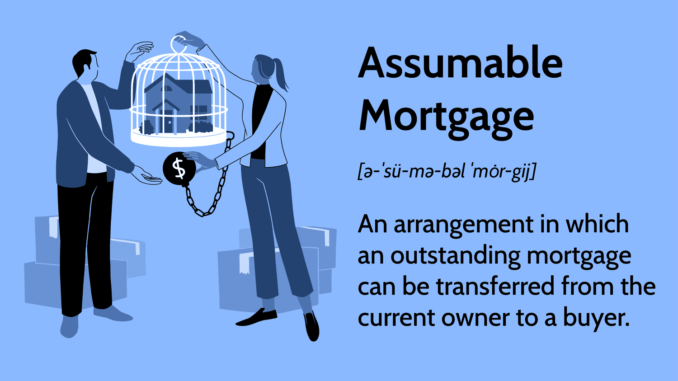
The elevated interest rate environment has brought an old product, the assumable mortgage, back into fashion. But a landscape of strict regulations, product limitations and operational inefficiencies hamper its widespread adoption.
Assumable mortgages remain a niche market compared to new mortgage issuance. But these transactions have grown recently. In 2023, the Federal Housing Administration (FHA) and the U.S. Department of Veteran Affairs (VA) handled about 6,400 assumptions, more than double the amount in 2022, according to a report in The Wall Street Journal.
An assumable mortgage enables qualified buyers to take over the seller’s mortgage terms, including the existing balance and interest rate. It presents an appealing proposition for both buyers and sellers, particularly those looking to capitalize on historically low mortgage rates. The fees are typically lower than those of new loans and no appraisal is needed.
Hampered by numerous hurdles
To begin with, assumptions are limited to FHA and VA loans, with rare allowances for U.S. Department of Agriculture (USDA) and conventional adjustable-rate mortgages (ARMs) under specific conditions. Fannie Mae and Freddie Mac loans, which represent nearly two-thirds of the mortgage market, cannot be assumed.
Additionally, many servicers find that loan assumptions are not profitable due to insufficient compensation, and they are calling for regulatory updates. Servicers can charge up to $900 to process, underwrite and close a transaction that includes an assumption. That is less than they would earn for writing a new mortgage and often less than the cost of processing the assumption.
In a paper published by the Urban Institute in October 2022, Ted Tozer, the former head of Ginnie Mae, said that the $900 limit wasn’t enough to compensate servicers for their expenses, let alone to make a reasonable profit.
In late 2022, the Mortgage Bankers Association asked the FHA and VA to raise the cap on assumption fees to $3,500 to compensate the work more fairly. But the caps haven’t changed.
As a result, mortgage companies don’t treat assumption requests as seriously as new loan demand, according to The Wall Street Journal.
In 2023, consumers filed 149 complaints concerning mortgage assumptions with the Consumer Financial Protection Bureau, up from 97 in 2022 and 67 in 2021, according to The Wall Street Journal. Many consumers alleged that mortgage companies were voluntarily delaying the assumption process.
In December, the VA issued a notice stating that companies should take no longer than 45 days to make a decision on an assumable loan. It reaffirmed that servicers must process assumptions and can be barred from the VA loan program if they don’t comply.
Lastly, some buyers simply struggle to come up with the down payment to cover the difference between the home’s sale price and the remaining balance on the mortgage. In theory, consumers can apply for a home equity line of credit (HELOC) to cover the difference, but these second mortgages, or piggyback loans, tend to have more stringent credit requirements.
Bypassing the red tape
Last September, Raunaq Singh launched Roam, a platform that aims to facilitate transactions with an assumable mortgage. The startup’s mission is twofold: to help buyers and sellers discover and advertise home listings attached to assumable mortgages, and to assist both parties with the paperwork during the transaction.
Last week, Roam introduced a closing guarantee to compensate sellers for the additional time and complexity that comes with the transfer of their mortgage. If more than 60 days go by between the time the offer is accepted and the close of escrow, Roam pledges to make the home seller’s mortgage payments for up to 60 days after the scheduled closing date.
